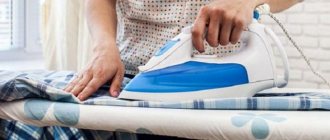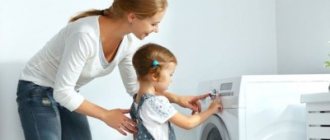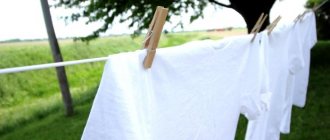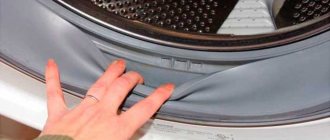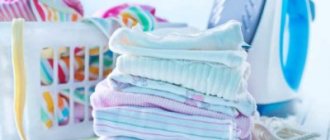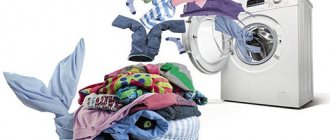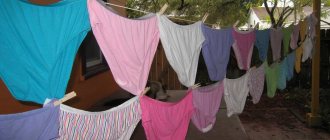A newly purchased set of bed linen pleases the eye with bright colorful colors, freshness, pleasant to the touch, crispy fabric, and there is a desire to immediately use the purchase and make the bed. Indeed: what doubts can there be if the bed is securely packed right at the factory? However, before you use sheets, pillowcases and duvet covers for the first time, you should think about whether to do it right away or to pre-wash the new bed.
Why not?
Housewives who consider washing new linen optional cite the following facts as evidence:
- new fabric does not need to be washed since it has not been used;
- packaging reliably protects bed linen from possible contamination;
- During production, the bed goes through a steaming process, which eliminates the presence of harmful microorganisms.
Attention! Not all manufacturers indicate on the labels the need to pre-wash a new bedding set, although in world practice the manufacturer strongly recommends washing it before using only purchased linen.
Wash or just iron
Many women skip step one - washing and go straight to ironing. This will protect you from bacteria, but it will not eliminate the technical smell and will not wash away the chemical treatment. The manufacturers themselves recommend washing before use - this is written in black and white on the labels. So ironing is not enough, you have to wash it. How to do this correctly next.
Why is it still necessary?
To the common question - whether to wash a new bed - the answer is clear: definitely! Manufacturers and doctors are unanimous in this opinion; it is better to follow their advice. So, what are the reasons for washing your bed before first use?
- Before getting into the hands of the buyer, the bed has gone a long way - from production to the seller. Industrial dust in a factory during production, storage on open warehouse shelves contributes to the accumulation of dust and bacteria.
- The packaging is not airtight (the bed is often packaged in cardboard boxes).
- If the linen was purchased from the market, then most likely the seller opened the package and let the buyer examine and feel the fabric.
- Natural fabrics are a good bait for dust mites, which cause skin diseases and allergies.
- New fabric, as a result of technical processing, acquires rigidity: washing will remove traces of the solution to give it a marketable appearance, help soften the bed and rid it of foreign odors.
And another important detail: after washing, the linen “shrinks” by 2-4 cm. A washed and ironed duvet cover will sit better on the blanket, and the pillow will not fall out of a clean, ironed pillowcase.
Why wash new bed linen?
If you still doubt the need to wash store-bought laundry , think about this:
- In order for a roll of fabric to turn into a future set, it will have to go through several stages of preparation. The material is transported in trucks, stored in dusty warehouses until it is needed, and only then sent for cutting. Then the seamstress takes care of the preparations. Are you sure that someone cares about the sterility of products?
- For example, ready-made bedding sets are put in order before packaging. But no one forbids sellers from opening the goods to check the quality or simply take a closer look. And other buyers often want to touch the fabric. And then you can lay the products on the bed.
- Washing natural materials is mandatory. If storage and transportation conditions are violated, bedbugs, mites or harmful bacteria may grow in the fabrics. Washing also greatly softens the bedding .
For adults
Even though our skin is more resistant to irritants than children's, it requires the same care. If the laundry has been treated with chemicals , water will wash it off. This will help avoid an allergic reaction. You can also check the quality of the color kit. Cheap paints fade terribly when washed.
For newborns
In the first six months of life, babies' skin is not only extremely delicate, but also thin. There are many factors to consider when choosing a sheet. Even wrinkled linen can negatively affect a child’s well-being. Let alone dirty. And the drugs used to treat the tissue, in addition to a rash, often cause coughing attacks .
Proper washing of a new set of laundry
Let's talk about how to wash new bed linen correctly so that the result does not disappoint, but pleases you. To do this, you should follow simple rules. The new set can be washed by hand or in a washing machine. Before washing, read and follow the recommendations on the label. In manual mode, the laundry is usually soaked for 1.5-2 hours in a solution of laundry soap or washing powder. Hand wash temperature 30-40⁰C, then rinse the bed in cold water. Colored items should be washed separately.
Important! Manual mode is often chosen for washing cotton beds. You need to wring out the laundry easily, without using force, to avoid folds and creases (for example, for linen or satin). Do not use bleach for washing - they will destroy the color, but conditioner can be used for freshness and softness.
How to properly iron and store fresh bed linen?
To prevent new products from becoming covered with creases and dense wrinkles, they must be ironed promptly and correctly. Do not store clean linen in a closet without proper treatment. Some housewives prefer to iron things immediately before use, using steaming. Such manipulation can quickly wear out the fibers and ruin the appearance of the item.
We recommend: Is it possible to wash nylon tights in a washing machine, or is hand washing better?
In addition, you need to remember the following nuances:
- On the reverse side, new bedding is ironed only if there is embroidery or lace on the front side.
- Manipulation should be carried out while the products are slightly damp, and it is better to avoid supplying steam.
- We iron natural fabrics at the minimum permissible temperature from the inside out.
- It is prohibited to spray silk, bamboo and linen with water during processing, as this will lead to stains. It’s better to just work with the iron longer.
If there is no intention to use the set immediately, then it should be placed separately from other bedding, having previously been lined with silica gel to prevent the accumulation of moisture in the fibers.
Tips for the first machine wash
If you have a modern washing machine, washing bed linen for the first time is not difficult: the main thing is to follow the correct operating modes of the equipment. The mode is selected depending on the fabric from which the bed is made (read more about how to choose the right one here). There are general recommendations:
- Before washing, turn pillowcases and duvet covers inside out to minimize friction of the fabric on the machine drum. The sheets are folded 4 times.
- The delicate wash mode is used (for sets made of cotton or linen, “quick” is suitable), temperature – no more than 40⁰C.
- You can use capsules, liquid gel or powder.
- The rinse mode with conditioner will make the laundry soft, smell nice, and fix the color. It's a good idea to include an extra rinse.
- The bed should be wrung out at no more than 600 rpm
- You shouldn’t put several sets of laundry in the machine: the colors and patterns may get mixed up.
- Children's bedding is washed with hypoallergenic products specially designed for this purpose; it is better not to use conditioner.
Whether to wash new bed linen or not is up to each housewife to decide for herself. One thing is certain: washing will protect you from possible allergies and make your bed fresh and soft. The purchase experience will be good, and the rest on the new bed will be pleasant!
How to replace wet cleaning: myths and reality
Sometimes you want to avoid the first wash of a set. One of the suggested options is to simply use an iron without wet treatment, because high temperatures disinfect the surface.
With this choice, the following positive effects are achieved:
- The material is disinfected by exposure to high temperatures.
- The fabric becomes soft.
But there were some downsides too:
- The chemicals used to treat the fabric still remain in the fibers.
- Residues of dyes also remain in the fabric.
Regular ironing cannot completely replace the first wash, so this option is not practical.
How often should you wash your clothes?
The frequency depends on the purpose. For different categories there are different frequencies.
- Sick. The more often the better! This is especially true for infectious diseases. The speed of recovery depends on how often you change your bed. The fact is that pathogenic organisms pass into the underwear fabric along with sweat. Therefore, to avoid self-infection, remake your bed every other day. And in the acute phases of the disease - every day.
- Old people, children. Newborns require daily changes. For the elderly and preschoolers, the optimal period is once a week. For older schoolchildren, especially during the period of hormonal changes and puberty, at least 2 times a week.
- For other categories, the most acceptable frequency is once a week.
Important! The bed mite, an almost invisible microorganism, is a lover of dust and moisture. It multiplies especially actively in mattresses and bedding with a natural base. Does not tolerate ultra-high or ultra-low temperatures. Therefore, regular treatment with hot water, drying in the cold and ironing are the best methods of prevention!
Instructions
Dishwashing detergent for removing greasy stains on clothes and furniture
0
replies and comments
Castor oil - as a household cleaner for fabric and leather products
2
reply and comment
Vinegar is an effective, natural, and versatile fabric cleaner and stain remover.
0
replies and comments
Acetone – effective removal of grease stains and stains of unknown origin
0
replies and comments
Gasoline is a cleaning agent against stains on clothes and skin.
0
replies and comments
Milk: delicate, gentle removal of difficult stains from colored and white natural fabrics
0
replies and comments
Baking soda is an affordable, natural, and versatile solution for removing stains from fabrics, making them soft, and refreshing the colors of items.
1
answer and comment
Ammonia is a universal cleaner for all types of fabrics, carpets, fur, leather, suede products.
0
replies and comments
Lemon juice is a universal cleaner that can cope with any dirt and unpleasant odors.
2
reply and comment
Boric acid is an effective and affordable means for bleaching and cleaning fabrics, including wool and silk.
3
reply and comment
Hydrogen peroxide is an indispensable cleaning agent for white fabrics, fur, suede, and wool.
0
replies and comments
Salt is a universal, harmless remedy for removing any dirt from fabrics, as well as making them soft and refreshing colors.
0
replies and comments
Mustard is a natural, safe remedy for removing various stains from fabrics, including delicate ones.
0
replies and comments
Toothpaste: More than just for brushing your teeth, it's an all-purpose cleaner for so many things
0
replies and comments
Vegetable oil: non-standard uses - from removing chewing gum to washing and bleaching kitchen towels and linen
0
replies and comments
Starch is an affordable natural remedy for removing stains from fabrics, tidying clothes and shoes, and eliminating unpleasant odors.
0
replies and comments
Laundry soap is a natural, affordable and highly effective means for washing clothes, bleaching fabrics and removing many types of stains
0
replies and comments
Solvents are indispensable cleaning agents for white and colored fabrics, fur, silk, wool.
0
replies and comments
Whitening and removing stains by boiling is an affordable and effective way to remove stains
0
replies and comments
Alcohol as a cleaning, antimicrobial and antifungal agent
0
replies and comments
Cigarette ash - as a cleaning, absorbent and polishing agent
0
replies and comments
Aspirin as a stain remover: effective savings, removal of stains and odors
0
replies and comments
Cosmetic scrub as a cleaning agent - when and how it can be used to clean fabrics and other products
0
replies and comments
Crushed eggshells – as a natural bleach and cleaner
0
replies and comments
Kefir as a cleaning agent: an original, simple and inexpensive way to get rid of stains
0
replies and comments
Vaseline – medical and cosmetic, as a means for dissolving contaminants, caring for leather and wood products
0
replies and comments
